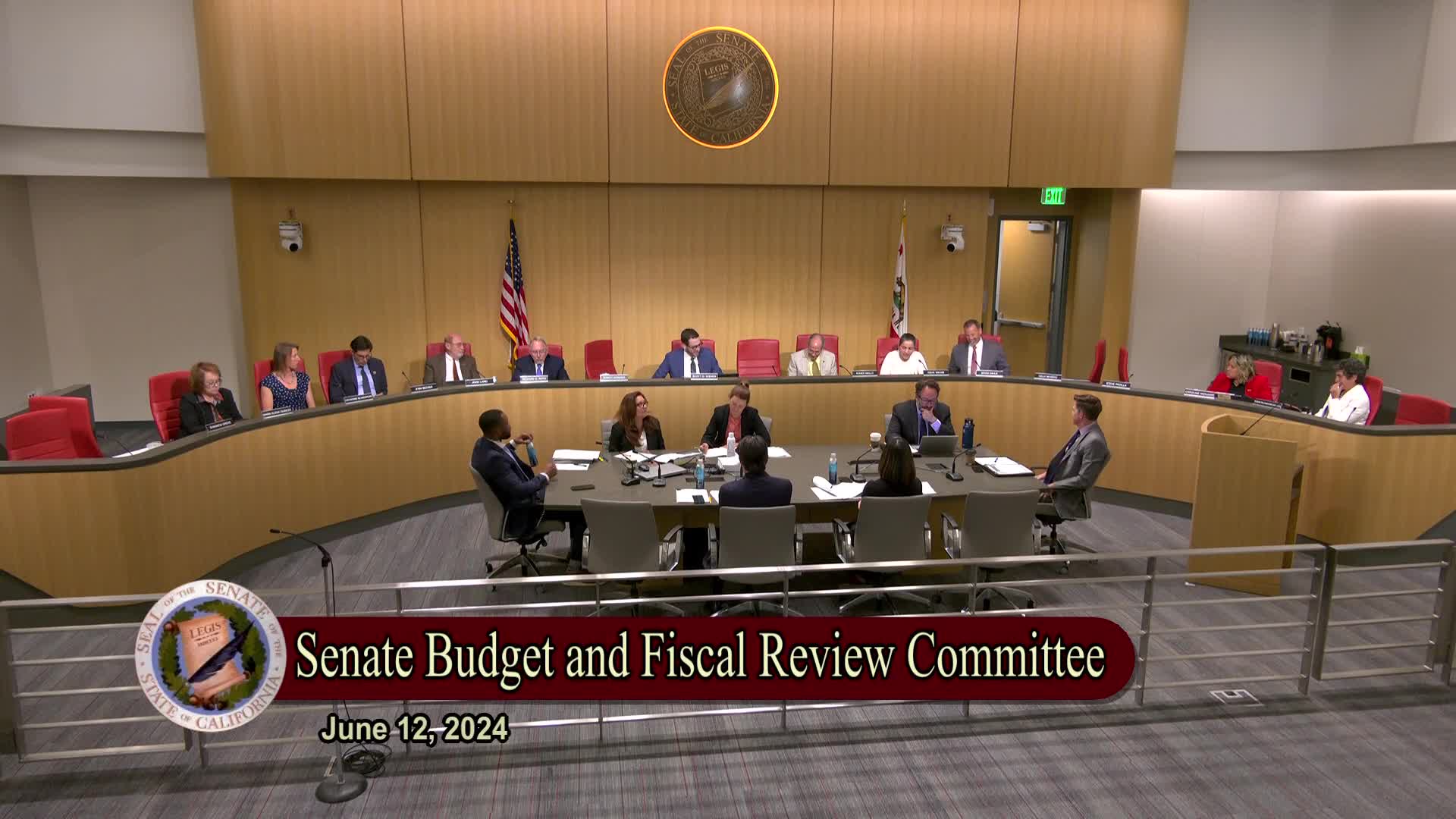Budget Cuts Spark Debate Over California's Prison Spending
June 12, 2024 | Budget and Fiscal Review, Subcommittees of Senate Standing Committees, California State Senate, Senate, Legislative, California

This article was created by AI summarizing key points discussed. AI makes mistakes, so for full details and context, please refer to the video of the full meeting. Please report any errors so we can fix them. Report an error »

In a recent government meeting, discussions centered on the California Department of Corrections and Rehabilitation (CDCR) budget, highlighting significant fiscal challenges and strategic priorities for the upcoming year. The meeting, led by the chair of budget subcommittee 5, emphasized the importance of addressing budget cuts amid a projected deficit, which has necessitated a focus on reducing unnecessary expenditures and redundant services.
The current prison population in California is approximately 90,000, housed across 32 facilities. The trend has shown a decline in this population, a shift attributed to realignment policies that allow for housing individuals in local county jails rather than state prisons. This change has sparked discussions about public perceptions of incarceration, particularly the distinction between county jails and state prisons.
The proposed budget for CDCR is projected at around $14 billion, with some estimates reaching as high as $15 billion. This funding serves a relatively small segment of the population compared to the broader demographics of California, where 27.3% of residents are under 18 years old, and 10.7% are over 65. The chair underscored the need to prioritize funding for essential services that benefit the majority of Californians, including education and health services.
Key points of the budget discussion included maintaining funding for rehabilitation and reentry programs, protecting the judicial branch, and ensuring oversight of contractors involved in correctional services. The committee aims to eliminate wasteful spending while safeguarding critical programs that support crime victims and enhance public safety.
Concerns were raised about the \"use it or lose it\" mentality prevalent in government spending, which can lead to inefficient allocation of resources. The chair expressed a commitment to fiscal responsibility and a focus on serving the public's needs effectively.
Overall, the meeting reflected a concerted effort to navigate the complexities of the state budget while ensuring that essential services remain intact amidst financial constraints.
The current prison population in California is approximately 90,000, housed across 32 facilities. The trend has shown a decline in this population, a shift attributed to realignment policies that allow for housing individuals in local county jails rather than state prisons. This change has sparked discussions about public perceptions of incarceration, particularly the distinction between county jails and state prisons.
The proposed budget for CDCR is projected at around $14 billion, with some estimates reaching as high as $15 billion. This funding serves a relatively small segment of the population compared to the broader demographics of California, where 27.3% of residents are under 18 years old, and 10.7% are over 65. The chair underscored the need to prioritize funding for essential services that benefit the majority of Californians, including education and health services.
Key points of the budget discussion included maintaining funding for rehabilitation and reentry programs, protecting the judicial branch, and ensuring oversight of contractors involved in correctional services. The committee aims to eliminate wasteful spending while safeguarding critical programs that support crime victims and enhance public safety.
Concerns were raised about the \"use it or lose it\" mentality prevalent in government spending, which can lead to inefficient allocation of resources. The chair expressed a commitment to fiscal responsibility and a focus on serving the public's needs effectively.
Overall, the meeting reflected a concerted effort to navigate the complexities of the state budget while ensuring that essential services remain intact amidst financial constraints.
View full meeting
This article is based on a recent meeting—watch the full video and explore the complete transcript for deeper insights into the discussion.
View full meeting
